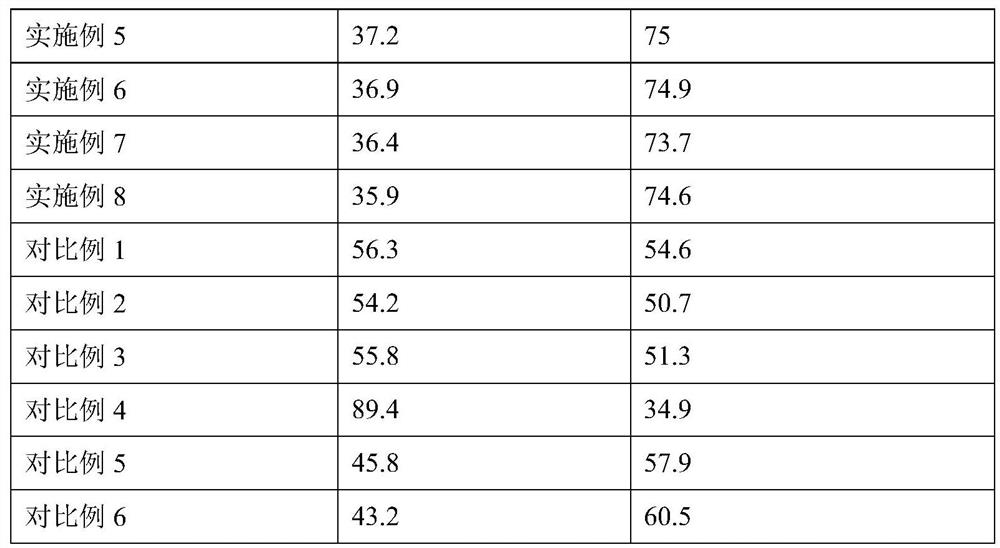Nanometer silicon composite particle, negative plate and solid lithium battery
A technology of composite particles and nano-silicon, applied in negative electrodes, nanotechnology, battery electrodes, etc., can solve the problems of low energy density, low theoretical capacity, and poor comprehensive electrochemical performance of lithium-ion batteries. Excellent chemical properties, improved uniformity, and low AC impedance
- Summary
- Abstract
- Description
- Claims
- Application Information
AI Technical Summary
Problems solved by technology
Method used
Image
Examples
Embodiment 1
[0029] 1. Preparation of Nano-Silicon Composite Particles
[0030] A nano-silicon composite particle used as a negative electrode material for a lithium battery, the nano-silicon composite particle is a nano-silicon composite particle modified by N-P-COF-GO, which is a kind of COF and GO interlaced on the surface of silicon nano-particles, N and P Co-doped structure inside COF and GO.
[0031] The preparation method of the nano-silicon composite particles comprises the following steps:
[0032] Disperse silicon nanoparticles, phosphoketene pyruvic acid, acrylamide, and graphene oxide in an organic solvent, the particle size of the silicon nanoparticles is 50 nm (purity greater than 99%), and The mass ratio of acrylamide and graphene oxide is 33:0.002:0.002:1.5, and the organic solvent is a mixed solution of dioxane and trimethylbenzene with a volume ratio of 3:1.
[0033]The above mixture was sonicated at room temperature for 60 minutes, the obtained mixed solution was added...
Embodiment 2
[0040] Compared with Example 1, the particle diameter of silicon nanoparticle is 200nm in the nano-silicon composite particle preparation process in Example 2, and the mass ratio of silicon nanoparticle, phosphoketene pyruvic acid, acrylamide and graphene oxide is 40: 0.003:0.001:0.5; the volume ratio of dioxane to trimethylbenzene was 2:0.7; after ultrasonic mixing at room temperature for 40 minutes, it was rapidly frozen in liquid nitrogen, degassed by a freezing pump-thaw cycle, and the Pyrex tube was placed at 120 Heating in the range of °C for 60 hours; vacuum drying at 60 °C for 4 hours, followed by vacuum sintering at 400 °C for 8 hours; ball milling time for 10 minutes. The remaining conditions are the same as in Example 1.
Embodiment 3
[0042] Compared with Example 1, the acrylamide in the preparation process of the nano-silicon composite particles in Example 3 was replaced by aliphatic n,n-methylenebisacrylamide, and the particle size of the silicon nanoparticles was 500 nm, and the silicon nanoparticles, The mass ratio of phosphoketene pyruvic acid, n,n-methylenebisacrylamide and graphene oxide is 30:0.001:0.003:2.0, and the volume ratio of dioxane to trimethylbenzene is 2.5:0.5; ultrasound at room temperature After mixing for 20 minutes, snap frozen in liquid nitrogen, degassed by a freeze pump-thaw cycle, and heated Pyrex tubes at 80°C for 24 hours; vacuum oven dried at 60°C for 5 hours, followed by vacuum sintering at 350°C 10 hours; ball milling time is 20 minutes. The remaining conditions are the same as in Example 1.
PUM
| Property | Measurement | Unit |
|---|---|---|
| particle diameter | aaaaa | aaaaa |
| thickness | aaaaa | aaaaa |
| thickness | aaaaa | aaaaa |
Abstract
Description
Claims
Application Information
 Login to View More
Login to View More - R&D
- Intellectual Property
- Life Sciences
- Materials
- Tech Scout
- Unparalleled Data Quality
- Higher Quality Content
- 60% Fewer Hallucinations
Browse by: Latest US Patents, China's latest patents, Technical Efficacy Thesaurus, Application Domain, Technology Topic, Popular Technical Reports.
© 2025 PatSnap. All rights reserved.Legal|Privacy policy|Modern Slavery Act Transparency Statement|Sitemap|About US| Contact US: help@patsnap.com


